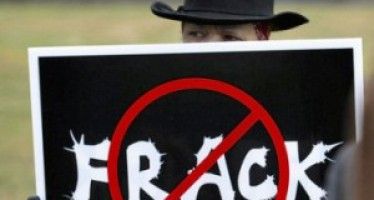Is Cap and Trade a much larger Enron scam?
By Warren Duffy
It happened again.
First, earlier this year the California Independent System Operator reported to the Federal Energy Regulatory Commission suspicion that J.P. Morgan Chase was guilty of a plot to keep electric power off the California consumer market until it was able to command “exceptionally high prices.” The amount grabbed was $73 million. The ISO oversees California’s electricity market.
J.P. Morgan Chase’s name became public when FERC sued it in U.S. District Court for access to internal emails. J.P. Morgan denies the charge.
Now, another company has done the same thing. So far, the company name has not been revealed. Reported the Sacramento Bee, “The company, which state officials wouldn’t identify, has allegedly reaped $10.5 million in ‘excessive gains’ since April.” There has been no court filing against the second claim, so the name of the alleged company remains a mystery.
Are market speculators circling the California Cap and Trade waters preparing to repeat the gaming of the California electric system as they did in 2000 and 2001? For those who may have forgotten, it was Texas company Enron that drove electric prices to record highs, causing massive blackouts for California consumers, while billions of dollars were made in excess profits. Enron went bankrupt and some of its executives went to prison.
What does all of that have to do with California Cap and Trade?
The California Air Resources Board is poised to being its Cap and Trade carbon-credit auction in the state on November 14. At least 400 California manufacturers, utilities and energy producers will be participating. These are businesses in transportation, construction, food processing, concrete, refineries and even colleges.
They will be required to purchase carbon credits to cover the excess over their pollution “caps.” The fear among many people is this will open the Cap and Trade market to all sorts of sophisticated players who know all too well how to “game the system” at the cost of more than just electricity.
At the end of August, CARB conducted a “dry run carbon credit auction” with approximately 150 non-disclosed participants. What happened during that 3-hour exercise remains a closely guarded secret.
What little we do know came from CARB spokesman, David Clegman, who admitted attempts by unidentified players to test the boundaries of the market. Some bids offered by so-called carbon purchasers were described as “completely screwy,” exceeding price limits designed to prevent any cornering of the market. And yet, CARB insists they have safeguards in place to protect their carbon credit auctions from market manipulators.
Since CARB cannot sell carbon credits, it has set up the Western Climate Initiative to oversee all transactions. Having incorporated as a Delaware Corporation , WCI is free from open-meeting disclosures required under California law. If CARB is adamant about protective measures in place, why would they not insist on open-meeting disclosures?
Is the wolf guarding the hen house?
Related Articles
Fracking safety: NYT vs. LAT, yet again
The fracking revolution continues to unfold in a half-dozen states around the nation, with enormous benefits to all Americans. A
Wall Street doubts CA shale hype — but not Occidental
April 11, 2013 By Chris Reed Bloomberg News, which is doing an increasingly good job covering California of late, had
Bill would ban sex offenders from driving for Uber, Lyft
The next time you grab a ride with Uber or Lyft, a California lawmaker wants to make sure a registered





